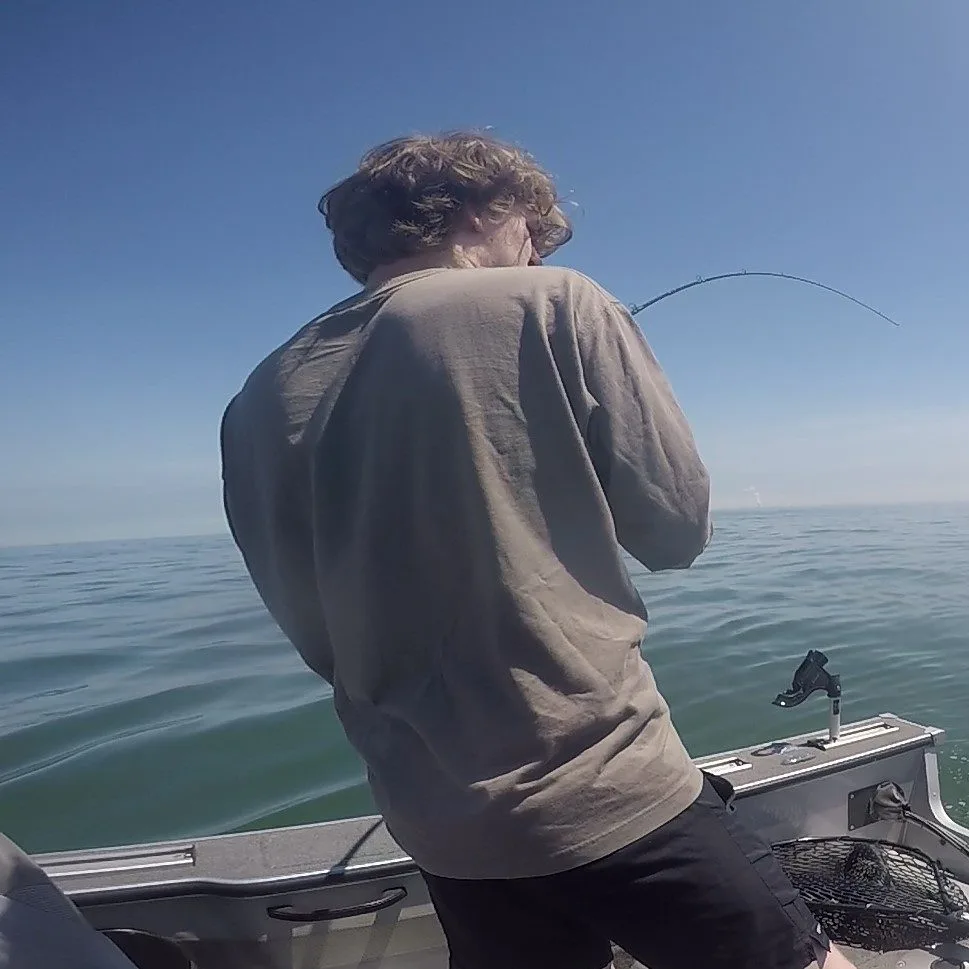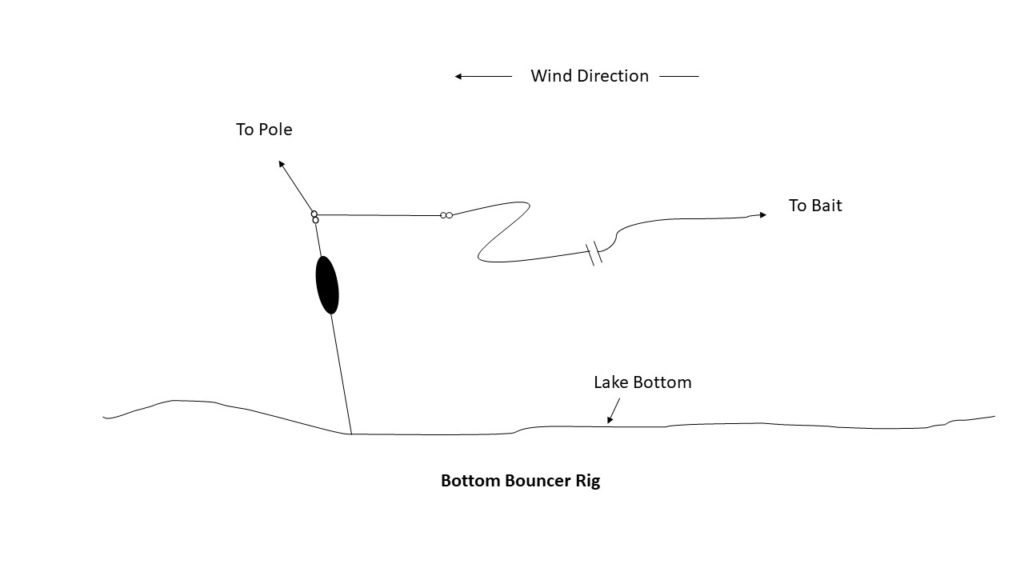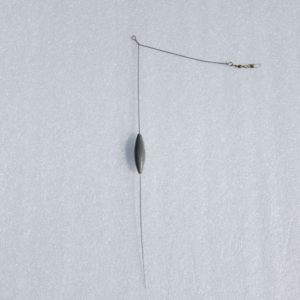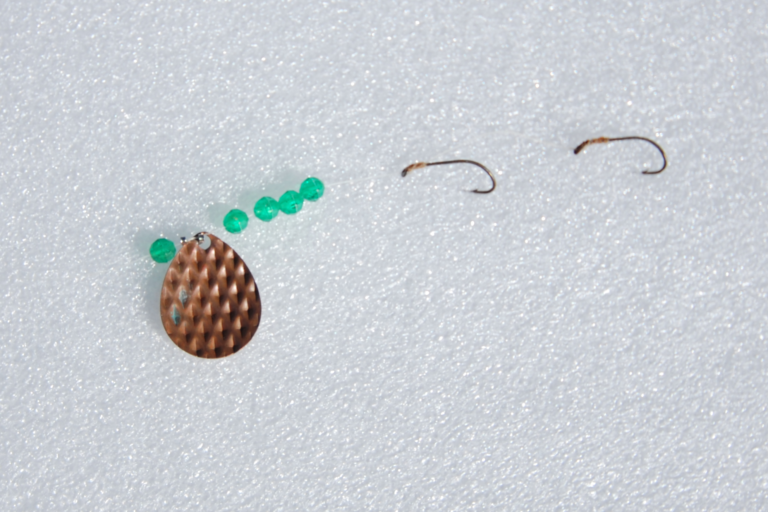Bottom-Bouncing for Walleye on Lake Erie

* This page contains affiliate links. The Great Lakes Fisherman may earn a commission on items purchased through these links. For more on this, please click here.
Bottom-bouncing for walleye can be one of the most productive way to catch these tasty fish. It can also be one of the most fun. This is because you need not worry about boat direction or running into other boats. Once everything is set up, it’s simply a matter of keeping the rods clear of weeds and catching fish! But it wasn’t always this way.
Having fished the Michigan waters of Lake Erie from the time I was 10, I have seen many changes to the lake. At one time, the lake was very murky with a visibility of only a foot or so. This low-light environment was perfect for holding walleye in the western basin. Trolling Hot-N-Tots, especially chartreuse, was the method of choice back then and spreading them out on planer boards almost assured success.
Since then, zebra and quaga mussels have cleaned up the lake water tremendously. This has changed the low-light environment under the water, driving the fish deeper in the shallow waters of the western basin. Because of this, newer tactics have been tested over the years and one of them, bottom-bouncing, has become a new favorite of many.
What is Bottom-Bouncing?
Bottom-bouncing is exactly what it sounds like – bouncing a moving bait off the bottom of the lake bed to attract bottom-dwelling walleye. In order for this to work properly, the wind and waves need to be high enough to depart action to the bait. If the waves are at least a foot in height, this tactic should work just fine. The technique is similar to jigging, in that the rig bounces up and down off of the lake bottom. The main difference is that in bottom-bouncing, the rods are typically placed in rod holders and you are letting boat and wave action do the work for you.
The basic set-up for bottom-bouncing consists of a bottom-bouncer tied to the main line, with a bait trailing behind it.

The weight is let down to the lake or river bottom and the line is adjusted so that the weight bounces off of the bottom with the wave action. The key to bottom bouncing is getting the right speed and action on the bait by adjusting the boat movement, weight of the bottom bounder and line angle to the water.
The Rods
The rods used for bottom bouncing need to have a stiff enough tip to handle the weight. The tip of the rod will tell you whether or not you are bouncing on the bottom. When a wave crest hits the boat, you want to see the rod tip load up and then abruptly unload as it lifts the weight/bait off of the bottom. Likewise as the boat falls into the wave trough, the rod tip should abruptly straighten, indicating that the weight has hit bottom. You can take in or let out more line to get this action just right. I have found that medium-action trolling rods for walleye work just fine for bottom bouncing. Ideally, the rods are placed in rod holders to keep the action consistent. This also allows you to use as many rods as you legally can, as long as your boat can accommodate them all.
The Bait
When it comes to the bait, most trolling baits will work. The bait of choice on the western basin of Lake Erie, however, is a nightcrawler harness rigged with a live nightcrawler. The bait can trail anywhere from 2-10 feet behind the bottom bouncer. This distance depends on how much action you want the harness to have. The shorter the lead is, the more action the bouncer will depart to the weight.


Walleye tend to school so once you’ve found some fish you can experiment with bait styles and colors until you find the combination of choice. This can vary day to day and sometimes even within the same day so don’t be afraid to change things up when the fish stop biting.
Speed
The best days are when the wind is blowing your boat in the 1-2 mph range. When this is the case, you likely won’t need any help from your boats motors or drift socks to dial in your speed because mother nature has done that work for you. However, not everyday is perfect and you may need a drift sock to slow you down a bit. If your drift speed is on the higher end, you also may need to use a heavier bottom bouncer to get the bait down to maintain good action. Likewise, if your rod bends too much prior to lifting the rig off of the bottom, you may want to go to a lighter bottom bouncer. A bit of wind and waves is essential and if the wind isn’t very strong (a rare day on Lake Erie) and you’re not going fast enough, it may be time to give up on bottom bouncing and start trolling.
Rod Placement
Each boat is different in terms of how it reacts to the waves and wind and how it is setup with rod holders. What works for one boat, might not be the winning recipe for another. The bottom line is that you want the baits to get the action you are looking for, while maximizing the number of lines in the water. For my 18′ boat, I like to turn the engine to one side. This will ensure that the boat turns to one side, allowing me to place rod holders along one side of the boat and off the back corners. With this setup, I can bounce 6-8 rods at a time.

One of the best things about bottom bouncing is that once you get your lines set, it can be quite a relaxing way to fish. No boat to steer, no engine noise and no worries about line tangles. Just grab your favorite drink, sit back and wait for the bite!
